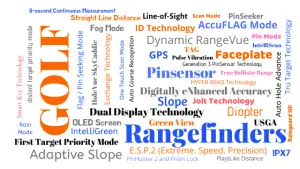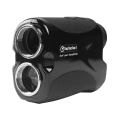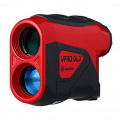Whether you’re a novice or an experienced player looking to start a professional career in golf, it is important to know about the terminologies used in the sport to ensure you are well aware of everything you hear on the field.
Not being aware of these jargon will not only make you appear non-serious but may also harm your growth. Hence, go through this article to understand all the glossary terms associated with this gentleman’s game.
A|B|C|D|E|F|G|H|I|J|K|L|M|N|O|P|Q|R|S|T|U|V|W|X|Y|Z
A
AccuFlag Mode: This is a term associated with Laser Link’s golf rangefinders and it refers to the unit’s primary targeting mode.
Adaptive Slope Technology: This is the feature that lets players switch between non-slop and slope mode to ensure the rangefinder remains tournament legal.
Advanced Pinsensor Technology: Advanced Pinsensor Technology is a feature you will find on TecTecTec’s rangefinders. It is designed to improve precision by going past overlapping objects and reaching your target.
Auto Course Recognition: The Auto Course Recognition uses GPS to find the exact location of the golf course where you’re at. This allows the machine to show all the required details without needing any manual work.
Auto Hole Advance: The Auto Hole Advance feature works with the Auto Course Recognition feature and is only found on GPS machines. It enables the rangefinder to automatically pinpoint what hole you’re attempting, providing the right distance. Once you move to the next hole, it will automatically calculate the distance to it.
D
Digitally eNhanced Accuracy (DNA): This technology is found on Leupold rangefinders. It improves speed and precision in all situations by ensuring a 1/10th yard accuracy.
Distant Target Priority Mode: The Distant Target Priority Mode is used by hunting laser rangefinders. This mode uses background targeting or far-sighted technology to measure the distance to your target in a straight line. It ignores distractions and calculates the distance to the furthest target.
Diopter: Diopter is a feature that is used to help focus the image seen through the lens. Just like the focus wheel, diopter also helps in the adjustment and focusing of the image but in two completely different ways to ensure you get a clear picture according to your eyesight.
(DMD) Distance Measuring Device: A DMD is a device used to measure distance and is permitted under a local rule.
Dual Display Technology: The Dual Display Technology enables the users to switch between a bright red vivid display or a sharp black display, keeping in view the lighting conditions or the players’ personal preference.
Dynamic RangeVue: You will find this feature on SkyCaddie device. It provides multiple distances with arcs over greens and fairways to help players make the right club selection.
E
E.S.P.2 (Extreme. Speed. Precision): You will find this technology on the latest Bushnell rangefinders. It ensures high speed, excellent accuracy 1/10th of a yard within a range of 5 to 125 yards.
Exchange Technology: This technology became popular when Bushnell added it to its Tour X rangefinder, a discontinued model. It made use of an interchangeable faceplate system so players can make the rangefinder tournament legal. It’s still found on some laser rangefinders from different manufacturers.
8-second Continuous Measurement: When you press the designated button, the machine will continuously measure the range for about 8 seconds and give you distances to a number of objects in the range including some very small targets. This feature can be found on the latest Nikon Coolshot rangefinders.
F
Faceplate: Faceplate is a plate that protects the rangefinder. It is an enlarged end or attachment on the end. There are several colored interchangeable faceplates available on the market.
First Target Priority Mode: First Target Priority mode shows the distance to the nearest object. It is useful and helps save time.
Flag/Pin Seeking Mode: You will find this mode on almost all laser rangefinders but under different names. This allows the rangefinder to seek out and zero in on the distance to the pin.
Fog Mode: This mode coined by Leupold recoups with various weather conditions such as rain, snow, and fog. It allows the rangefinder to measure correct distances and show clear images even during poor weather conditions.
G
GPS Rangefinders: GPS rangefinders use the Global Positioning System to measure distances, loud courses, and observe hazards. They are said to be quick and easy to use but may not be the most reliable in terms of accuracy.
Green View: This feature allows you to see the layout and shape of the green so you can manually drag and drop the pin to your required position for improved targeting. It’s usually found on Garmin products.
Generation 3 PinSensor Technology: You will find this on Breakin 80’s rangefinders. It’s the company’s primary targeting mode.
Golf Mode/ID Technology: You will find this on Nikon models. The company uses this technology to calculate angle compensation values.
H
HoleVue SkyCaddie: The HoleVue SkyCaddie helps you catch a close view of the hole that you’re playing. It basically offers an eagle view to help you understand the hole.
HYPER READ Technology: You will find this technology in Nikon models. It improves speed and gives clear results within seconds.
I
IntelliGreen: You will find this feature on SkyCaddie rangefinders. It provides a graphical representation of the actual green on the course you’re playing. The result is based on your angle of approach.
IPX7: The term IPX is used to define exactly how water resistant a product is. The X in IPX can be replaced by a number. It helps measure standards. When it comes to rangefinders, IPX7 refers to a unit’s ability to handle up to 3 feet of water. If it can handle more, then the number will be higher, if it can handle less then the number will be lower IPX6, etc.
IntelliScan: You will find this feature on Breaking 80 rangefinders. This feature allows users to receive updated distances as you pan.
J
Jolt Technology: The Jolt Technology found in Bushnell rangefinders offers short bursts of vibrations once it successfully latches onto the flag. Thanks to this technology, you will immediately know when the target gets locked on.
L
Line-of-Sight: Line of Sight is the distance between you and the target.
O
OLED Screen: Short for organic light-emitting diode, OLED is a type of screen that works well in bright conditions.
One Touch Scan Mode: This feature allows the rangefinder to scan the area with just a simple click.
P
Pin Mode: You will find this on GolfBuddy rangefinders. It’s their primary targeting mode.
PinSeeker: You will find this on TecTecTec rangefinders. It’s their primary targeting mode.
PinHunter 2 and Prism Lock: You will find this on Leupold devices. The job of this technology is to ensure that the machine is able to locate and lock onto flags in no time without compromising on accuracy.
PlaysLike Distance: This feature is usually found on Garmin machines and is used to adjust yardages for downhill or uphill shots based on elevation changes. This makes it easier to choose the right club.
Pulse Vibration: The rangefinder vibrates a little when the target gets locked so that you know it’s time to play. It’s the same as Jolt Technology.
R
Rule 4-3: This is a rule that covers the use of Artificial Devices and Unusual Equipment; Abnormal Use of Equipment in Golf. It prevents the use of any GPS device or laser rangefinder in tournaments. It’s important to know all about these rules if you’re serious about professional golf.
Rainguard HD: RainGuard is a proprietary lens coating that guards against rain, snow and even your breath. This is very important because moisture can damage the rangefinder. You will find this on Bushnell models. The main job of this technology is to protect fogging and ensure the lens remains clean.
Rain Mode: You will find Rain Mode on Bushnell models. It allows the rangefinder to work in rain and snow and give clear distances by rejecting reflections due to rain or snow.
S
Scan Mode: The Scan mode permits you to pan or scan the course and give you updated distances to targets and objects within your range.
Slope Compensation: This feature calculates the compensated range and the angle to offer an adjusted distance when elevation changes. This feature helps players pick the right club so they can make a good move.
Slope Mode: This Slope mode is used for calculating angle compensation values.
Smart Key Technology: You will find this feature on Leupold models. It uses an interchangeable faceplate system so players can make the rangefinder tournament legal
Smart Slope: The smart slope is a feature used for calculating angle compensation values. It is found on Breaking 80 models.
Straight Line Distance: This tells you the horizontal distance from you or the device to your target in a straight line. You will find this option on almost all rangefinders.
T
TAG (Target Acquisition Gear): Target Acquisition Gear (TAG) is a sophisticated targeting device used by artillery spotters.
True Ballistic Range (TBR): This is defined as the horizontal distance between you and your target.
True Golf Range (TGR): This term refers to angle compensation values. You will find it on Leupold models.
Tru Target Technology: You will find this on Nikon models. It lets users toggle between two priority modes Distant Target and First Target.
U
USGA: Short for United States Golf Association, it is the body that looks after golf tournaments and makes rules and ensures they’re followed. It also defines which rangefinders can be used and how.
V
Vivid Display Technology: You will find this on Bushnell models. It features vivid displays that offer better clarity, contrast, and transmission, making it easier to read the screen in poor light conditions.
Vibration Reduction (VR) Technology: Vibration Reduction (VR) is a picture stabilization technology that minimizes blur caused by camera shake so you can see clear pictures. This makes the unit perfect for windy conditions and shaky hands.
Z
Zero In Alignment System (ZAS): You will find this on Laser Link models. This combined with the AccuFlag Mode ensures higher accuracy.




